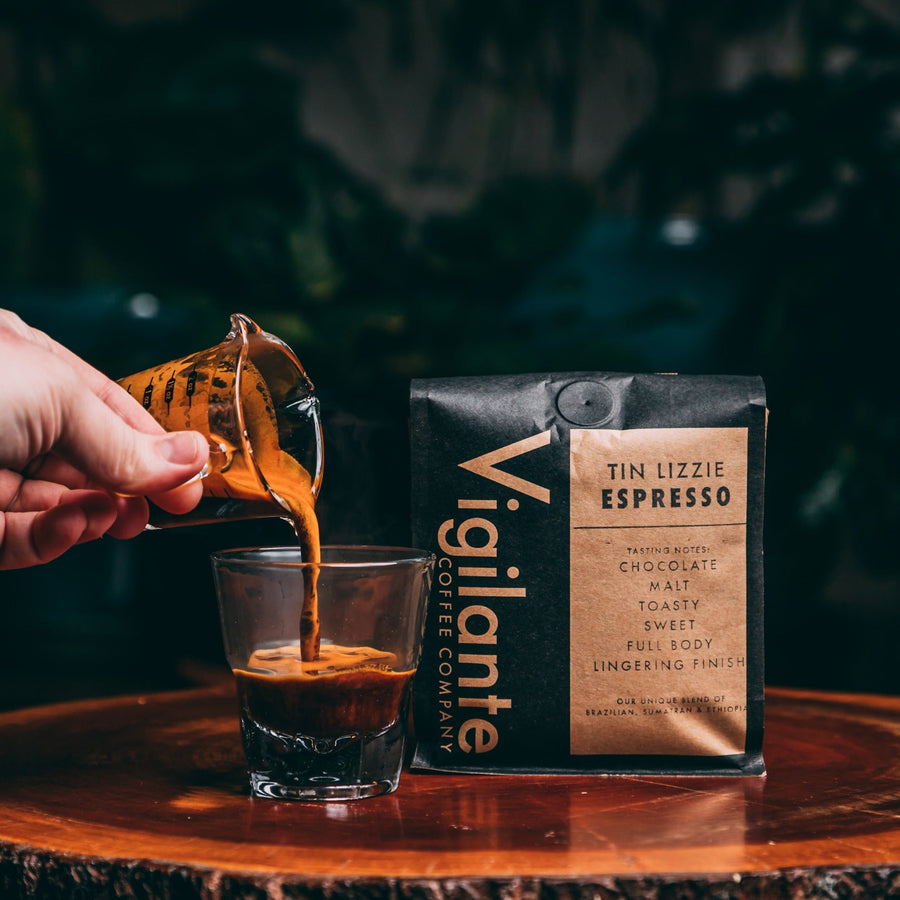Comprehending Coffee Beans: the Journey From Espresso to Blended Coffee Beans

The Origins of Coffee: A Worldwide Perspective
While you could consider coffee as a modern staple, its beginnings map back centuries, linking with societies around the world. The tale starts in Ethiopia, where tale claims a goat herdsman named Kaldi uncovered the stimulating results of coffee beans after discovering his goats romping vigorously after eating them. This triggered interest, leading to coffee's spread to Arab investors who treasured the brewed beverage. By the 15th century, it reached Persia, Egypt, and Turkey, where coffee shops came to be social hubs for discussion and society.
As profession paths expanded, coffee made its means to Europe in the 17th century, rapidly acquiring appeal. Each culture added its one-of-a-kind spin to coffee preparation, enhancing its background.
Growing and Harvesting of Coffee Beans
As coffee's trip evolved, the emphasis changed to the growing and harvesting of specific bean selections, specifically those made use of for coffee. You'll discover that espresso beans often originate from Arabica or Robusta plants, each offering distinct tastes. The perfect expanding conditions include high elevations and rich, well-drained soil, which enhance the beans' high quality.
During the harvest, selecting methods vary. In some regions, workers hand-pick ripe cherries, ensuring only the very best fruit goes to processing. In various other locations, mechanical harvesters are utilized, particularly on larger ranches. Timing is vital; you desire to gather when the cherries get to peak ripeness for optimum flavor.
When collected, the beans are gotten ready for handling, which is necessary in determining their final preference. Comprehending the cultivation and collecting procedures provides you understanding right into what goes right into your favorite coffee, enriching your gratitude for each cup.
Handling Approaches: From Cherry to Bean
Currently that you have actually learnt more about collecting coffee beans, let's explore how those cherries change into the coffee beans you love. You'll see just how different harvesting strategies impact taste, adhered to by the crucial steps of fermentation and drying out. Lastly, we'll damage down the milling and grading procedure that determines your coffee's high quality.
Collecting Methods Clarified
When it comes to coffee, understanding harvesting methods is crucial, because they straight impact the taste and quality of the beans you enjoy. Discerning choosing entails hand-picking only ripe cherries, guaranteeing you obtain the best quality beans. Inevitably, the selection of collecting strategy can substantially affect your coffee experience, so it's worth knowing how those beans made it to your mug.
Fermentation and Drying Out
After gathering, the next steps in processing coffee beans play a considerable function in shaping their flavor. You'll locate that fermentation is vital, as it assists break down the mucilage surrounding the beans, enhancing their preference profile. Depending upon the approach, this procedure can last from a couple of hours to several days, with varying results based on temperature level and moisture.
Sun-drying allows the beans to absorb flavors from the atmosphere, while mechanical drying out warranties constant dampness levels no matter of climate. Correct drying out is essential to prevent mold and mildew and maintain the beans' high quality, eventually influencing your cup of coffee.
Milling and Grading Refine
As fermentation and drying out established the phase for flavor development, the milling and grading process warranties that just the very best coffee beans make it to your cup. This phase entails getting rid of the outer layers of the coffee cherry, including the parchment and husk. After milling, the beans are arranged by dimension and weight, guaranteeing an uniform top quality. You'll find that grading assists recognize defects and classify beans, which influences taste and scent. Top notch beans get a higher quality, leading to a richer coffee experience. As soon as graded, the beans await packaging and delivery, protecting their special attributes. This precise process is necessary for providing the extraordinary preference you appreciate in every sip of your favorite mixture.
Toasting Strategies: Opening Flavor Potential
When you roast coffee beans, the approach you choose can substantially influence the flavor account. Recognizing the connection in between time, temperature, and roasting methods is vital to exposing the possibility of your brew. Let's discover just how these components integrated to develop the best cup.
Roasting Approaches Discussed
While you could think that all coffee roasting methods produce the exact same outcomes, the truth is that each technique exposes one-of-a-kind flavor potentials in the beans. You can pick in between methods like drum roasting, air roasting, or perhaps typical frying pan roasting. Drum toasting uses a turning drum to equally disperse warmth, enhancing caramelization and creating a balanced flavor. Air roasting, on the other hand, distributes hot air around the beans, advertising a lighter roast with noticable acidity. Pan toasting enables hands-on control yet requires constant attention to prevent burning. Each technique has its nuances, so try out various methods can assist you uncover the excellent roast that straightens with your preference choices. Appreciate the trip of locating your optimal cup!

Influence on Taste Account
Different roasting approaches not only influence the process yet also substantially affect the taste profile of the coffee beans. Dark roasts, on the other hand, bring out strong, great smoky flavors, often covering up the bean's special characteristics. Comprehending these subtleties assists you appreciate the artistry behind your cup of coffee, enhancing your overall experience with every sip.
Time and Temperature Level Variables
To launch the complete taste possibility of coffee beans, both time and temperature throughout the toasting procedure play substantial roles. When toasting, you'll find that greater temperatures can swiftly develop flavors, however if you rush it, you might end up with burnt notes. Alternatively, lower temperatures permit for a much more progressive taste growth, showcasing the beans' unique attributes.

Timing is simply as vital; extending the roast too long can lead to a loss of level of acidity and illumination, while as well short a roast might leave the beans underdeveloped. Discovering that wonderful area calls for technique and trial and error. By readjusting these aspects, you can disclose the abundant, complicated flavors concealed within each bean, producing a genuinely impressive coffee experience.
The Art of Mixing: Crafting Special Coffee Profiles

Start by choosing a base coffee that gives a strong foundation. A brilliant Ethiopian bean can bring fruitiness, while a rich Brazilian coffee includes body.
As you mix, bear in mind that each mix informs a story. You're not just making coffee; you're developing an experience. So, take your time, taste often, and enjoy the journey of finding your trademark mix.
Brewing Approaches: How Prep Work Influences Flavor
Blending coffee opens up a domain of taste possibilities, but how you make that mix can significantly influence your final mug. On the various other hand, a pour-over highlights the coffee's clearness and brightness, excellent for showcasing delicate notes.
Espresso, with its high stress, generates a focused shot that emphasizes sweet taste and crema. If you like a lighter mixture, think about a cool mixture method; it generates a smooth, much less acidic taste.
Ultimately, testing is essential. Adjusting variables like water temperature level, grind dimension, and make time can change your coffee's account. So, embrace the art of developing to find the flavors concealed in your coffee blends. The right method can elevate your experience to brand-new heights.
The Future of Coffee: Sustainability and Development
As the coffee industry advances, sustainability and development are becoming essential for attending to environmental obstacles and conference customer demands. You'll observe that more coffee firms are adopting environmentally friendly techniques, from sourcing beans ethically to carrying out sustainable farming methods. These changes not only help the world yet additionally enhance the high quality of the coffee you take pleasure in.
You could see innovations like biodegradable product packaging and water-saving developing approaches that lower waste. Advanced technology, such as blockchain, is likewise ending up being prominent, making sure openness in the supply chain, which permits you to map your coffee back to its beginnings.
On top of that, buying local communities and supporting farmers through reasonable profession campaigns fosters a more sustainable coffee environment. As you sip your next cup, bear in mind that your selections can add to a brighter future for coffee. By deciding for lasting brands, you're not simply enjoying a beverage; you're making a positive impact on the world.
Frequently Asked Concerns
What Is the Difference Between Arabica and Robusta Beans?
Arabica beans are smoother, sweeter, and have a higher level of acidity, while robusta beans are stronger, more bitter, and have more high levels of caffeine. When brewing your coffee., you'll notice these distinctions in flavor and fragrance.
Just How Does Elevation Affect Coffee Bean Taste?
Altitude effects coffee bean flavor considerably. Greater altitudes generate beans with brighter level of acidity and complicated flavors, while reduced altitudes commonly generate beans that are heavier and much less nuanced. You'll observe these differences in your cup!
What Are the Health And Wellness Perks of Alcohol Consumption Coffee?
Drinking coffee can improve your energy, improve psychological focus, and also improve physical performance. It's abundant in anti-oxidants, may reduce the danger of particular conditions, and can promote a much healthier metabolic rate when eaten in moderation.
Can Coffee Beans Be Recycled for Brewing?
Yes, you can reuse coffee beans for developing, but the taste might be weak. If you delight in trying out, try recycling them in various methods, like cool mixtures or adding to shakes for an extra kick.
Exactly how Should I Shop Coffee Beans for Quality?
To maintain your coffee beans fresh, store them in a SOE closed container in an awesome, dark location. Stay clear of exposing them to light, warmth, or moisture, as these aspects can promptly weaken their taste and scent.
Recognizing Coffee Beans: the Journey From Espresso to Blended Coffee Beans.
Currently that you have actually learned regarding collecting coffee beans, let's check out just how those cherries change right into the coffee beans you love.When you roast coffee beans, the technique you select can significantly affect the flavor account - Single Origin Espresso.While you could believe that all coffee toasting techniques produce the exact same outcomes, the reality is that each method exposes special flavor possibilities in the beans.Various roasting methods not only influence the procedure yet additionally significantly impact the flavor account of the coffee beans
Comments on “A Guide Before Buying SOE Single Origin Espresso”